This week, Pure Storage launched a new QLC-based FlashBlade. The new Pure Storage FlashBlade//S uses new Intel Xeon “Ice Lake” processors and QLC NAND to deliver more performance and scaling than the previous generation. Let us get into the hardware.
Pure Storage FlashBlade//S
FlashBlade has been around for 5 years, but this is a big step in the product’s evolution. Something that Pure noted on its call with STH was that these platforms are expected to scale over a lifetime with new features and capacities, and that is what happened with the original generation.
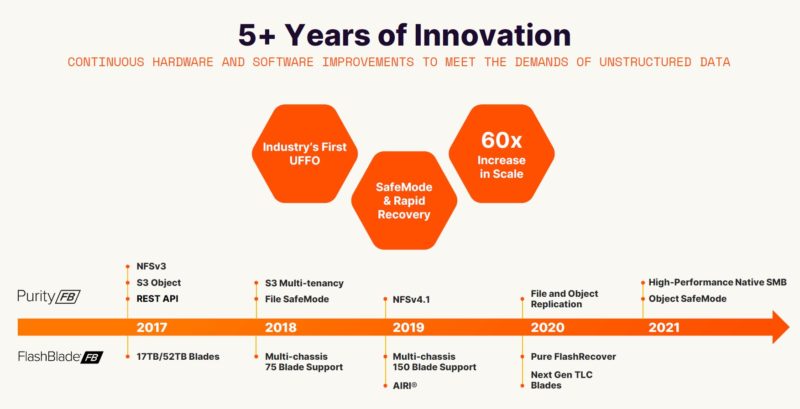
The new system goes from 15 blades down to only 10 but is now in a 5U chassis. Each blade now can handle more flash.
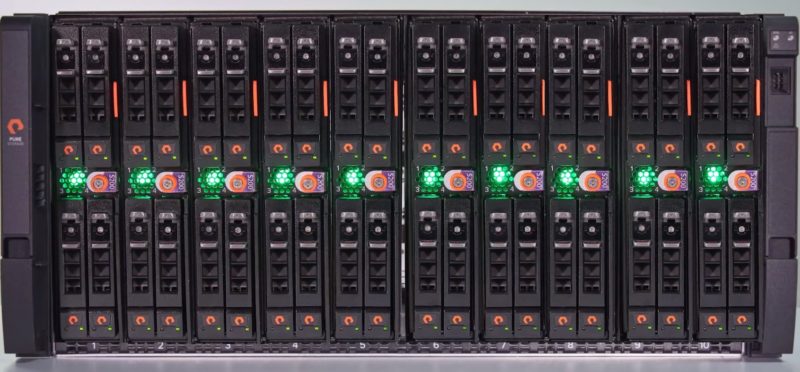
The blades themselves have the four flash modules at the front, and then at the rear there is a 3rd generation Intel Xeon Scalable Processor (Ice Lake) running the heart of the node.
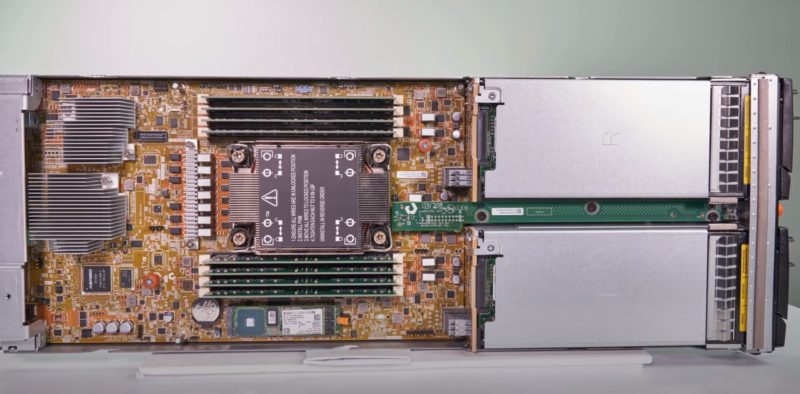
What is interesting here is that due to the placement of the M.2 boot SSD (which looks like a 240GB module), Pure is only able to get 8 DIMMs or 1 DIMM per channel. For a storage blade, it is likely that the company simply does not need more capacity or would not want to use Optane PMem 200. We can see an industry-standard ASPEED AST2500 BMC at the bottom. Most servers we have seen transition to the newer and faster Aspeed AST2600 BMC but some vendors are still using the older part in this transition period. The rear heatsinks are likely for the Lewisburg Refresh PCH and networking.
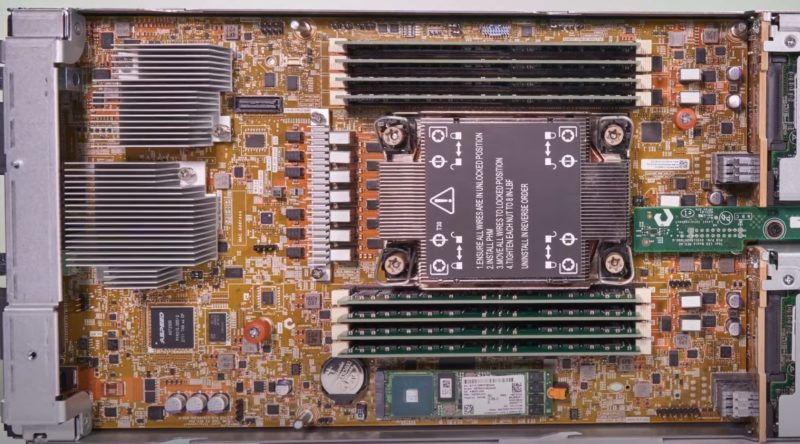
Pure is now using its QLC Direct Flash modules. They may look like 2.5″ SSDs, but they are custom modules with more going on there. Pure does not rely on a SSD to manage NAND. Instead, it is able to manage NAND at a system level across blades and drive efficiency from that higher-level view. We asked and these are running at PCIe Gen3 speeds, not Gen4. Since Ice Lake Xeons have PCIe Gen4, there is a chance that we will see faster modules in the future.
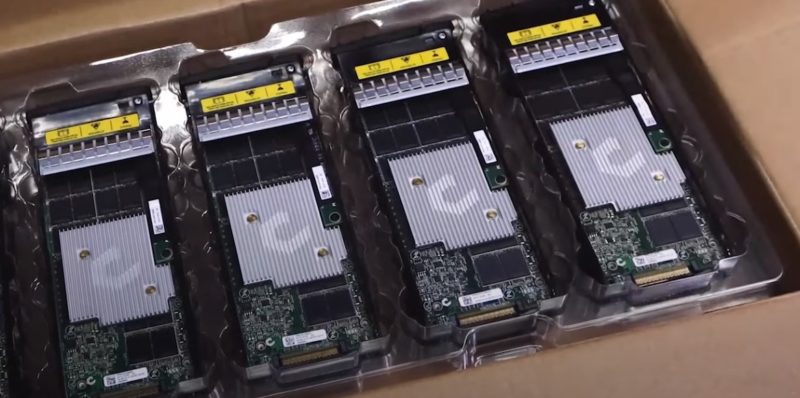
This is part of Pure’s disaggregation of the compute and the flash storage in this generation allowing for a more modular approach to system configuration.
A big part of the new launch is that there are now two different blade models, the S200 and S500. The S200 is the more mainstream model while the S500 is the higher performance model. Together, they allow FlashBlade//S to hit new markets.
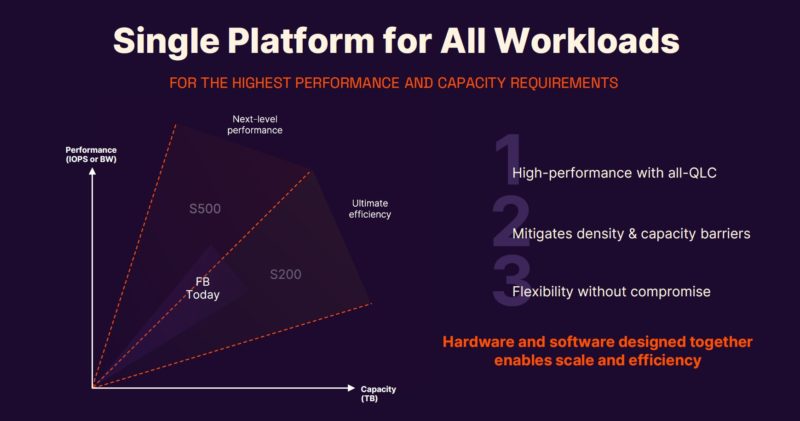
Here is the slide on the two. What it sounds like is that perhaps the S500 gets a better processor. That faster processor is being used less for compression and therefore the system gets more performance.
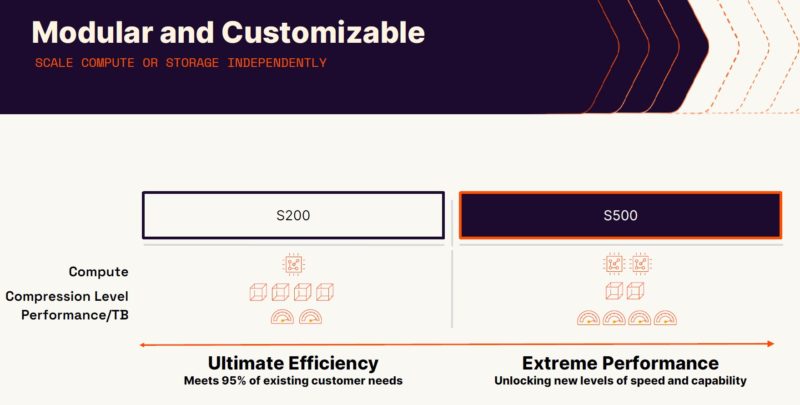
On the back of each chassis, there are 4x 2.4kW power supplies. There are also the two networking and management modules (FIOM-1000). Each FIOM-1000 has up to 8x 100GbE ports and then management interfaces.
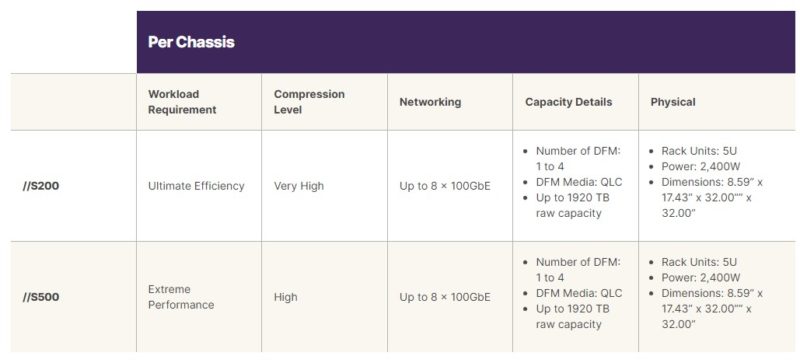
All told, with 40x QLC Direct Flash Modules or four in ten blades, Pure says that it can have up to 1920TB of raw capacity. That works out to each DFM being around 48TB raw. In terms of total capacity, one can put say ten of these in a cluster for tens of PB of capacity today, and hopefully more in the future.
Final Words
It is always great getting to see new platforms like this. We also wanted to say thank you to Pure for showing off what is inside, not just showing the face plates. So much of what Pure is doing these days comes down to its software initiatives that it is fun to sometimes take a step back and geek out on the hardware.

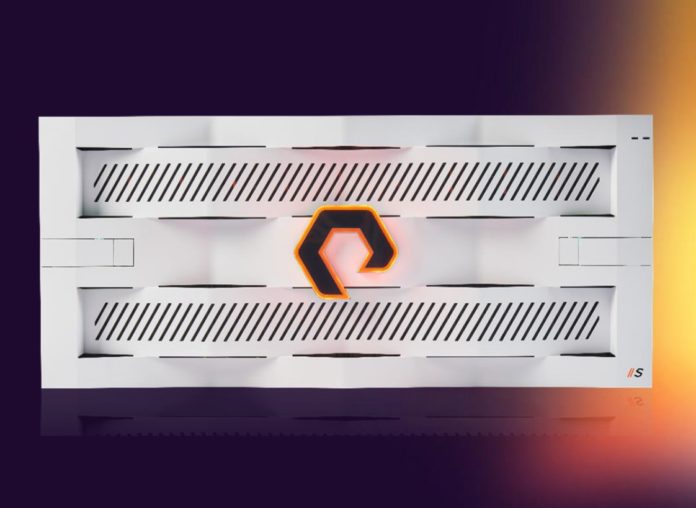



Typo: should be 48TB not 48GB.
Can I read that’s DFM (Direct Flash Modules) from Windows or Linux? I have these one but don’t know how to use it, the interface is U.2